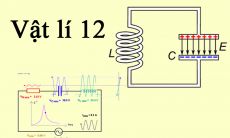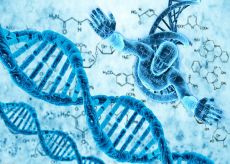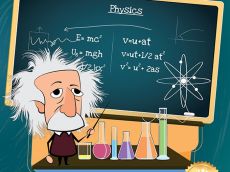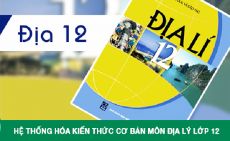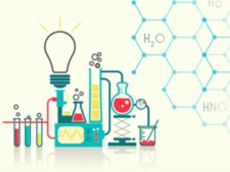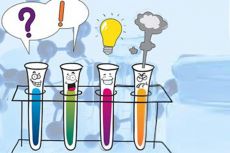Read the passage and mark A, B, C, or D to indicate the correct answer to each of the questions
An air pollutant is defined as a compound added directly or indirectly by humans to the atmosphere in such quantities as to affect humans, animals, vegetation, or materials adversely. Air pollution requires a very flexible definition that permits continuous change. When the first air pollution laws were established in England in the fourteenth century, air pollutants were limited to compounds that could be seen or smelled - a far cry from the extensive list of harmful substances known today. As technology has developed and knowledge of the health aspects of various chemicals has increased, the list of air pollutants has lengthened. In the future, even water vapor might be considered an air pollutant under certain conditions. Many of the more important air pollutants, such as sulfur oxides, carbon monoxide, and nitrogen oxides, are found in nature. As the Earth developed, the concentration of these pollutants was altered by various chemical reactions, they became components in biogeochemical cycles. These serve as an air purification scheme by allowing the compounds to move from the air to the water or soil. On a global basis, nature's output of these compounds dwarfs that resulting from human activities.
However, human production usually occurs in a localized area, such as a city. In such a region, human output may be dominant and may temporarily overload the natural purification scheme of the cycles. The result is an increased concentration of noxious chemicals in the air. The concentrations at which the adverse effects appear will be greater than the concentrations that the pollutants would have in the absence of human activities. The actual concentration need not be large for a substance to be a pollutant; in fact, the numerical value tells us little until we know how much of an increase this represents over the concentration that would occur naturally in the area. For example, sulfur dioxide has detectable health effects at 0.08 parts per million (ppm), which is about 400 times its natural level. Carbon monoxide, however, has a natural level of 0.1 ppm and is not usually a pollutant until its level reaches about 15 ppm.
Câu 15 : The word "dwarfs" in the second paragraph is closest in meaning to ______.
Suy nghĩ và trả lời câu hỏi trước khi xem đáp án
Lời giải:
Báo saiGiải thích:
Kiến thức từ vựng:
Từ “dwarfs” trong đoạn 2 gần nghĩa với từ _____
A. thu ngắn, rút ngắn
B. (không có từ ‘largen’)
C. làm dài ra
D. làm cho rộng ra, mở rộng
Dwarf (v): làm còi cọc, làm có vẻ nhỏ lại = shorten
→ Chọn đáp án A
Câu 16 : What does the passage mainly discuss?
Suy nghĩ và trả lời câu hỏi trước khi xem đáp án
Lời giải:
Báo saiGiải thích:
Đoạn văn chủ yếu thảo luận là gì?
A. Các chất ô nhiễm không khí có thể gây ra tác hại lớn như thế nào.
B. Tác động kinh tế của ô nhiễm không khí.
C. Nguyên nhân nào gây ra ô nhiễm không khí.
D. Cấu tạo của chất gây ô nhiễm không khí.
Thông tin: Đoạn văn nói về cấu tạo của chất gây ô nhiễm không khí.
→ Chọn đáp án D
Câu 17 : The word "adversely" in the first paragraph is opposite in meaning to _______.
Suy nghĩ và trả lời câu hỏi trước khi xem đáp án
Lời giải:
Báo saiKiến thức từ vựng:
Từ “adversely” trong đoạn 1 trái nghĩa với từ _____
A. quickly (adv): nhanh chóng
B. considerably (adv): đáng kể
C. admittedly (adv): phải thừa nhận rằng
D. positively (adv): tích cực
Adversely (adv): bất lợi >< positively
→ Chọn đáp án D
Câu 18 : According to the passage, the numerical value of the concentration level of a substance is only useful if _____?
Suy nghĩ và trả lời câu hỏi trước khi xem đáp án
Lời giải:
Báo saiGiải thích:
Theo đoạn văn, giá trị số của mức nồng độ của một chất chỉ hữu ích nếu _____?
A. nó nằm trong một khu vực cục bộ
B. biết được các chất khác trong khu vực
C. nó có thể được tính toán một cách nhanh chóng
D. biết được mức độ tự nhiên
Thông tin:
“in fact the numerical value tells us little until we know how much of an increase this represents over the concentration that would occur naturally in the area" (trên thực tế, chỉ số chỉ có ý nghĩa khi chúng ta nhận ra sự gia tăng này lớn hơn bao nhiên nồng độ trong tự nhiên)
→ Chọn đáp án D
Câu 19 : For which of the following reasons can natural pollutants play an important role in controlling air pollution?
Suy nghĩ và trả lời câu hỏi trước khi xem đáp án
Lời giải:
Báo saiGiải thích:
Vì lý do nào sau đây, các chất ô nhiễm tự nhiên có thể đóng vai trò quan trọng trong việc kiểm soát ô nhiễm không khí?
A. Chúng hoạt động như một phần của quá trình thanh lọc.
B. Chúng có số lượng lớn hơn các chất ô nhiễm khác.
C. Chúng ít gây hại cho sinh vật hơn các chất ô nhiễm khác.
D. Chúng tồn tại từ khi Trái đất phát triển.
Thông tin:
As the Earth developed, the concentration of these pollutants was altered by various chemical reactions, they became components in biogeochemical cycles. These serve as an air purification scheme by allowing the compounds to move from the air to the water or soil. (Khi Trái đất phát triển, nồng độ của các chất ô nhiễm này bị thay đổi bởi các phản ứng hóa học khác nhau, chúng trở thành thành phần trong các chu trình sinh địa hóa. Chúng như một sơ đồ lọc không khí bằng cách cho phép các hợp chất di chuyển từ không khí sang nước hoặc đất.)
→ Chọn đáp án A
Câu 20 : The word "detectable" in the third paragraph is closest in meaning to _______.
Suy nghĩ và trả lời câu hỏi trước khi xem đáp án
Lời giải:
Báo saiGiải thích:
Kiến thức từ vựng:
Từ “detectable” trong đoạn 3 gần nghĩa với từ _____
A. dangerous: nguy hiểm
B. separable: có thể tách rời được
C. beneficial: có ích, có lợi
D. observable: có thể quan sát được
Detectable (adj): có thể nhận thấy = observable
→ Chọn đáp án D
Câu 21 : The word "noxious" in the third paragraph is closest in meaning to _______.
Suy nghĩ và trả lời câu hỏi trước khi xem đáp án
Lời giải:
Báo saiGiải thích:
Kiến thức từ vựng:
Từ “noxious” trong đoạn 3 gần nghĩa với từ _____
A. toxic: độc hại
B. natural: tự nhiên
C. essential: cần thiết
D. organic: hữu cơ
Noxious (adj): độc, hại = toxic
→ Chọn đáp án A
Câu 22 : According to the passage, human-generated air pollution in localized regions ___.
Suy nghĩ và trả lời câu hỏi trước khi xem đáp án
Lời giải:
Báo saiGiải thích:
Theo đoạn văn, ô nhiễm không khí do con người tạo ra ở các vùng ___.
A. sẽ làm tổn hại các khu vực bên ngoài các khu vực cục bộ
B. sẽ phản ứng có hại với các chất ô nhiễm tự nhiên
C. có thể bị giảm đi do sản lượng chất ô nhiễm của tự nhiên
D. có thể lấn át hệ thống tự nhiên mà loại bỏ các chất ô nhiễm
Thông tin:
In such a region, human output may be dominant and may temporarily overload the natural purification scheme of the cycles. (Trong một khu vực như vậy, sự sản xuất của con người có thể chiếm ưu thế và có thể tạm thời làm quá tải sơ đồ thanh lọc tự nhiên của các chu trình.)
→ Chọn đáp án D
Đề thi thử THPT QG năm 2022 môn Tiếng Anh
Trường THPT Lê Khiết - Quảng Ngãi
